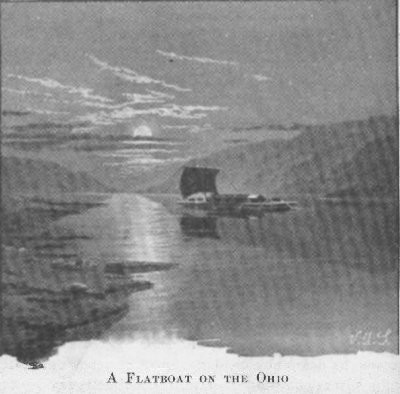How could they exchange these products for money or for goods of which they stood in need? There was no market at hand. The railroad was yet in the future. To the eastward lay the Alleghenies and a long and difficult journey by land impossible for their purposes. Their easiest and cheapest route to a market was by water, and close at hand were the Ohio and other rivers flowing to the Mississippi, and offering a tempting water way to New Orleans and the sea. But New Orleans was held by the Spaniards. Their laws and customs regulations were arbitrary; their business methods were antiquated, complicated, and irksome. Between their mediæval rule and the free and impatient spirit of the pioneers there was instant conflict. In the early nineties the Spanish authorities closed navigation and refused to grant the right to deposit goods at New Orleans to await the arrival of trading vessels. This right was essential for the men who journeyed down the great river in their "broad-horns," or rude homemade boats.

A crisis seemed at hand in 1795, but it was averted by the Spanish minister of state, Manuel Godoy, known as the "Prince of Peace,"4 who more than once had proved his friendly feeling for the United States. In 1795 a treaty was signed, which granted the right of deposit, with certain minor limitations, for three years. Thus an outbreak was averted. The way to a market was kept open during the three years, and thereafter until 1802. Then the Spaniards withdrew the right of deposit, the West rose in protest, and therein lay a potent motive for the acquisition of at least the mouth of the Mississippi. But the immediate demand of these American settlers was not for Louisiana, but simply for an open seaport, or at most the possession of the river’s mouth.
On the south, therefore, the Americans were shut in by Spain. In these days, when we have seen Spain losing the very last of her holdings in the Western Hemisphere, it is hard to realize the extent of her sway a little more than a century ago. A hundred years before our war with Spain the Spaniards held Texas, Mexico, and the Floridas, not to mention the West Indies and all of Central and South America except Brazil. They controlled the ports of Pensacola, Mobile, and New Orleans. The Spanish possessions ran from Fernandina to Natchez, and then north on the west bank of the Mississippi to the Lake of the Woods. Above New Orleans, as far as Point Coupée, there were plantations and villages. North of Point Coupée the west bank of the river was, with few exceptions, a wilderness.
The older part of New Orleans,5 which was laid out under Bienville by the Sieur La Blonde de la Tour, was inclosed by ramparts. Most of the streets retained their French names. Outside the ramparts dwelt a motley colony of foreigners and Americans. Many of the latter were traders who had floated down the river in clumsy boats, bringing produce for sale or shipment. The levee was crowded with shipping and piled high with goods. Spanish officers, regidores, alcaldes, and syndics, ruled a city which offered a most picturesque mingling of Spanish, French, Creole, foreign, and American types. But while all this was undoubtedly picturesque, the mediæval customs of the Spaniards, and their many rules and taxes, were galling to the active and impatient Americans.
4This remarkable title was derived from Godoy’s negotiation of the treaty of Basel with France in 1795. His personal character was open to reproach, but in his attitude toward France and toward American interests at the mouth of the Mississippi he rendered valuable aid to the United the States.
Return to text.
5McMaster, Vol. III, chap. xiv, gives a picturesque description of Spanish New Orleans.
Return to text.
Chapter 5
Back to Legacy
© 2001, Lynn Waterman